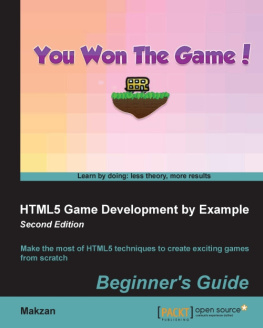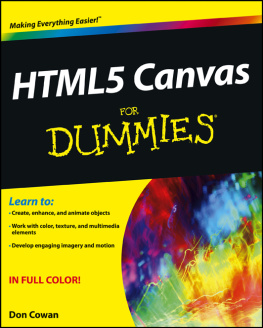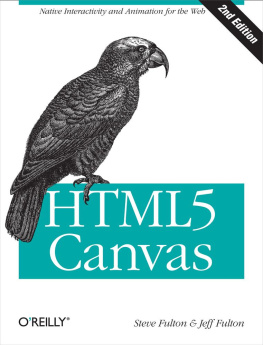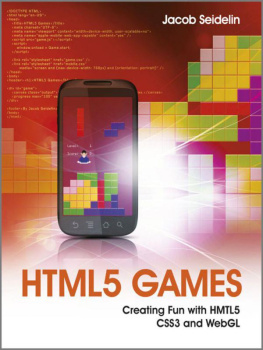Fulton Steve Fulton Jeff - HTML5 Canvas: Native Interactivity and Animation for the Web
Here you can read online Fulton Steve Fulton Jeff - HTML5 Canvas: Native Interactivity and Animation for the Web full text of the book (entire story) in english for free. Download pdf and epub, get meaning, cover and reviews about this ebook. City: Cambridge, LaVergne, year: 2011, publisher: Ingram Publisher Services distributor, OReilly Media, Incorporated, genre: Computer. Description of the work, (preface) as well as reviews are available. Best literature library LitArk.com created for fans of good reading and offers a wide selection of genres:
Romance novel
Science fiction
Adventure
Detective
Science
History
Home and family
Prose
Art
Politics
Computer
Non-fiction
Religion
Business
Children
Humor
Choose a favorite category and find really read worthwhile books. Enjoy immersion in the world of imagination, feel the emotions of the characters or learn something new for yourself, make an fascinating discovery.

- Book:HTML5 Canvas: Native Interactivity and Animation for the Web
- Author:
- Publisher:Ingram Publisher Services distributor, OReilly Media, Incorporated
- Genre:
- Year:2011
- City:Cambridge, LaVergne
- Rating:3 / 5
- Favourites:Add to favourites
- Your mark:
HTML5 Canvas: Native Interactivity and Animation for the Web: summary, description and annotation
We offer to read an annotation, description, summary or preface (depends on what the author of the book "HTML5 Canvas: Native Interactivity and Animation for the Web" wrote himself). If you haven't found the necessary information about the book — write in the comments, we will try to find it.
Abstract: No matter what platform or tools use, the HTML5 revolution will soon change the way you build web applications, if it hasnt already ... Whether you currently use Flash, Silverlight, or just HTML and JavaScript, youll quickly pick up the basics. Practical examples show you how to create various games and entertainment applications with Canvas as you learn ... Create and modify 2D drawings, text, and bitmap images ; Incorporate and manipulate video, and add audio ; Build a basic framework for creating a variety of games on Canvas ; Use bitmaps and tile sheets to develop animated game graphics ; Go mobile: port Canvas applications to iPhone with PhoneGap ; Explore ways to use Canvas for 3D and multiplayer game applications ...--Page 4 of cover
Fulton Steve Fulton Jeff: author's other books
Who wrote HTML5 Canvas: Native Interactivity and Animation for the Web? Find out the surname, the name of the author of the book and a list of all author's works by series.

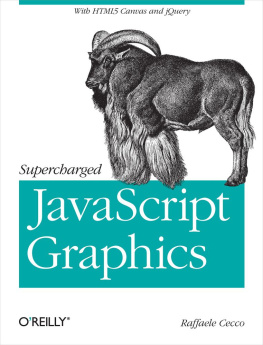
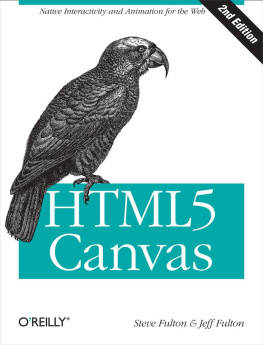
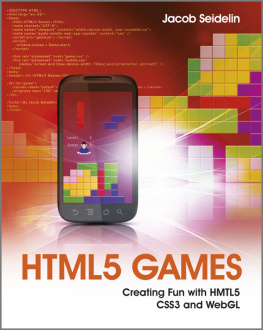
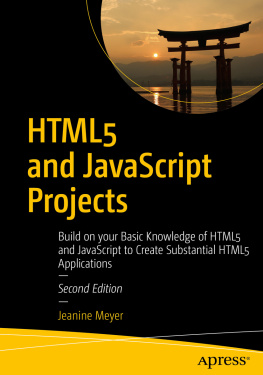
![Jeanine Meyer [Jeanine Meyer] - HTML5 and JavaScript Projects: Build on your Basic Knowledge of HTML5 and JavaScript to Create Substantial HTML5 Applications](/uploads/posts/book/120565/thumbs/jeanine-meyer-jeanine-meyer-html5-and.jpg)
